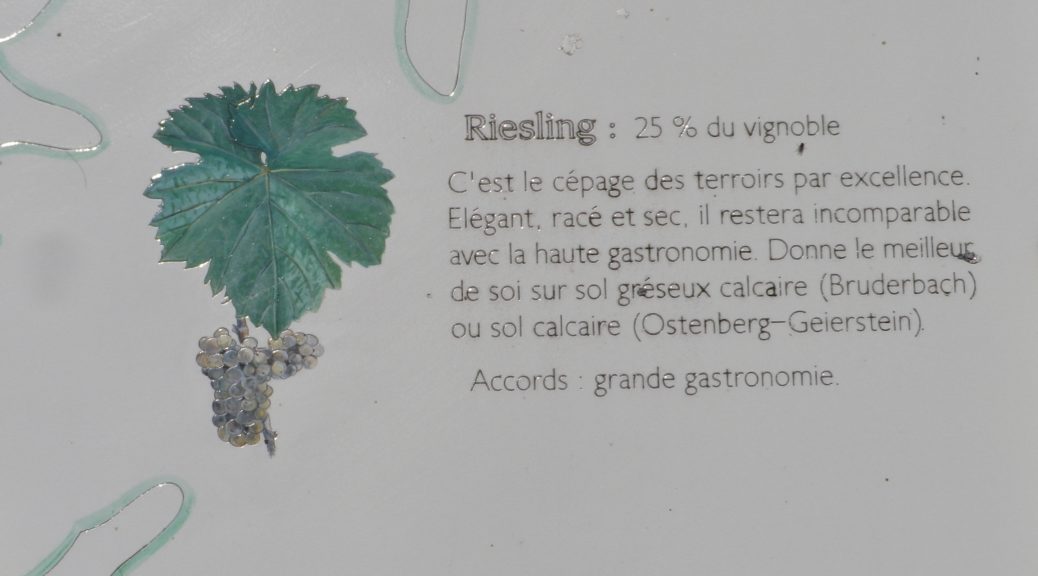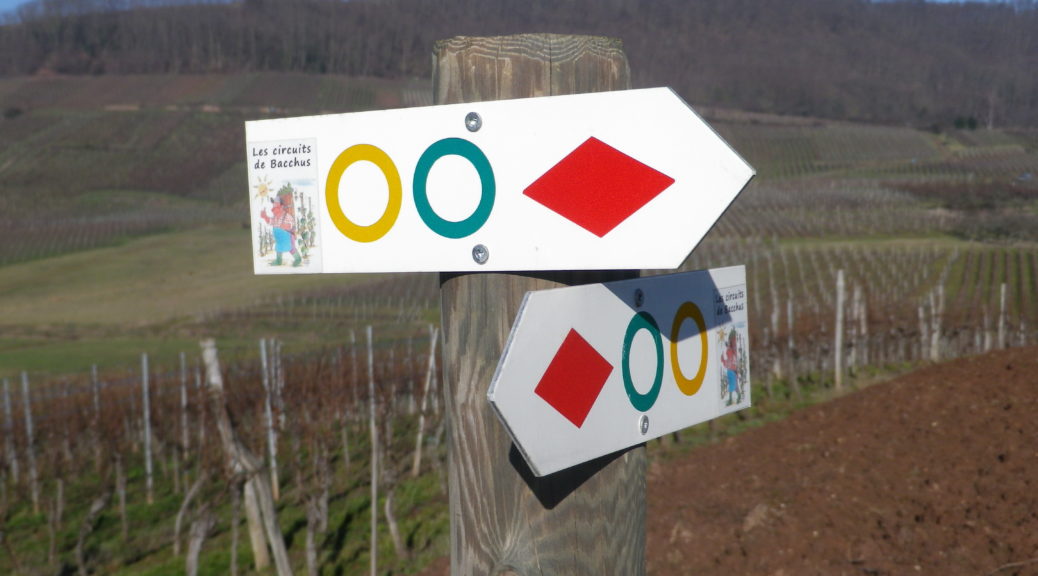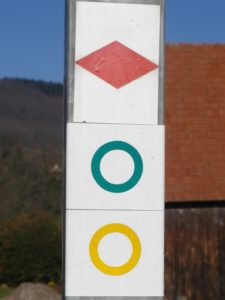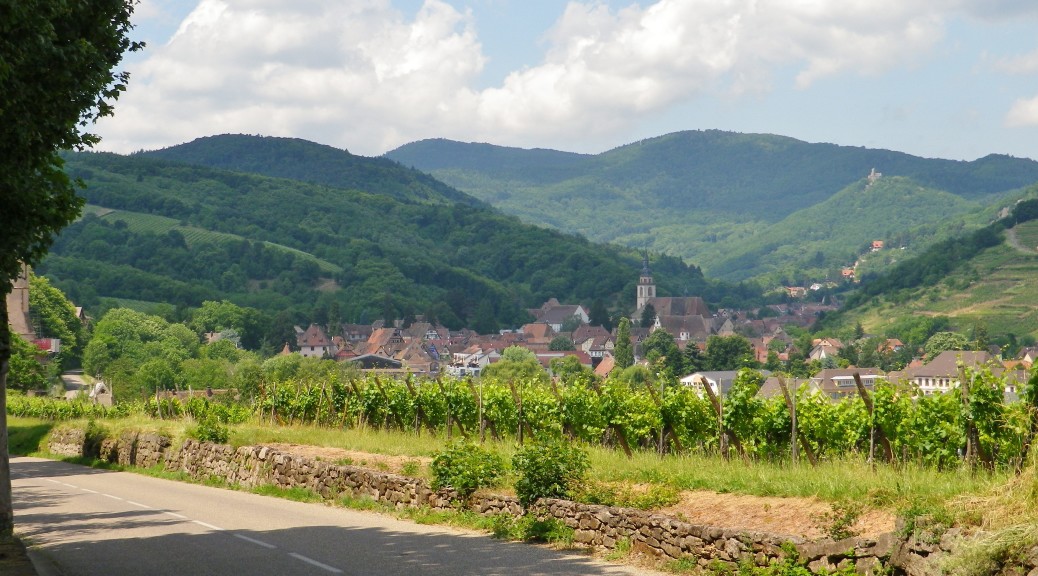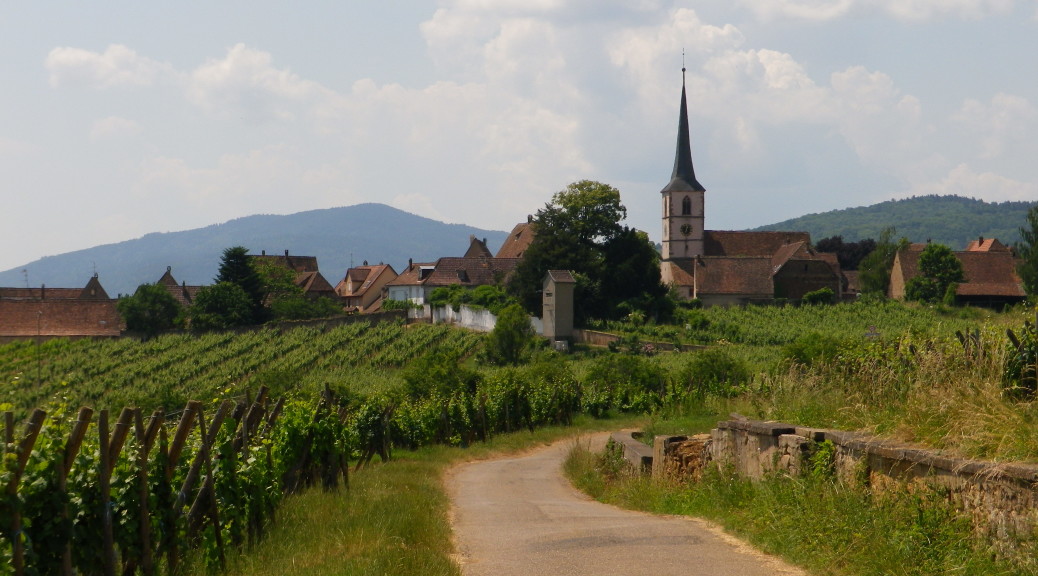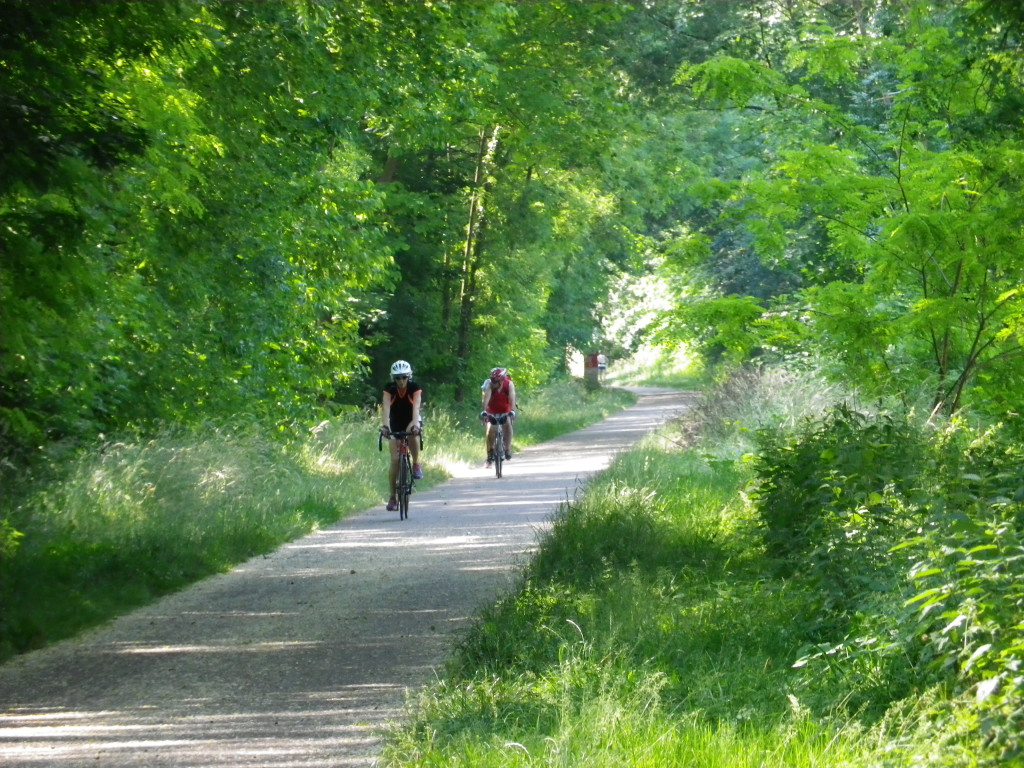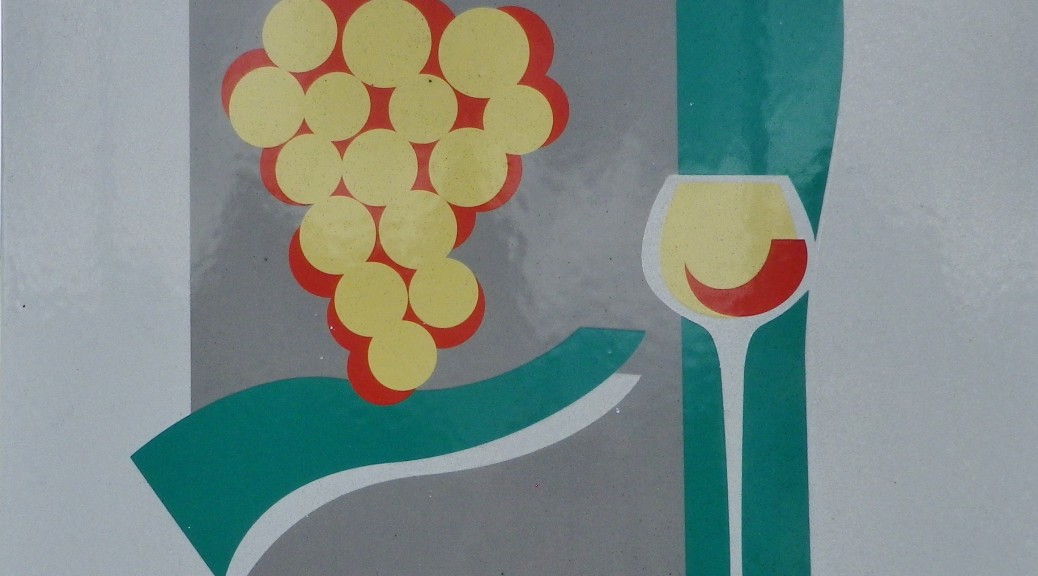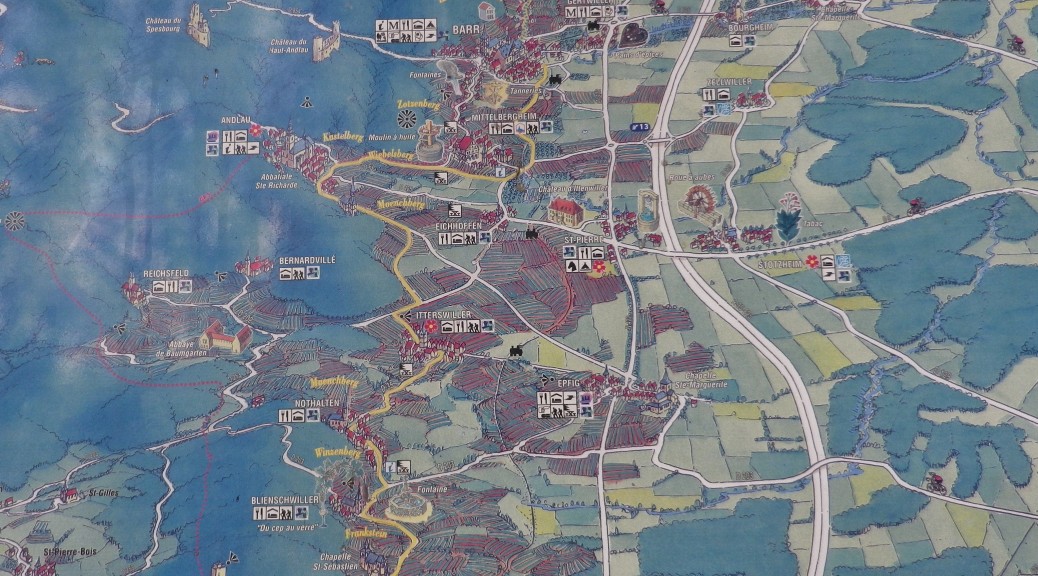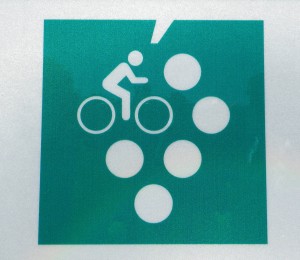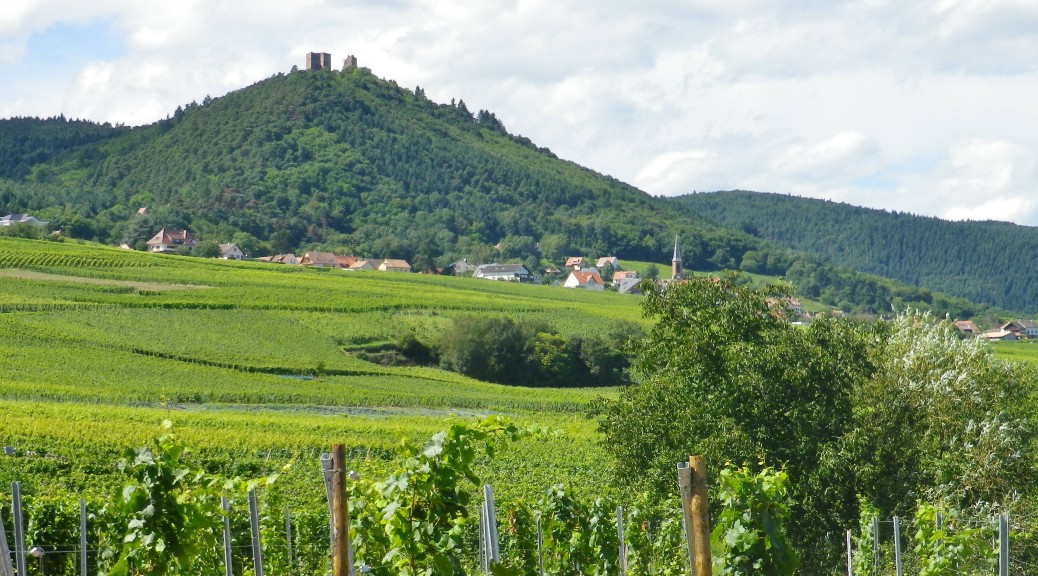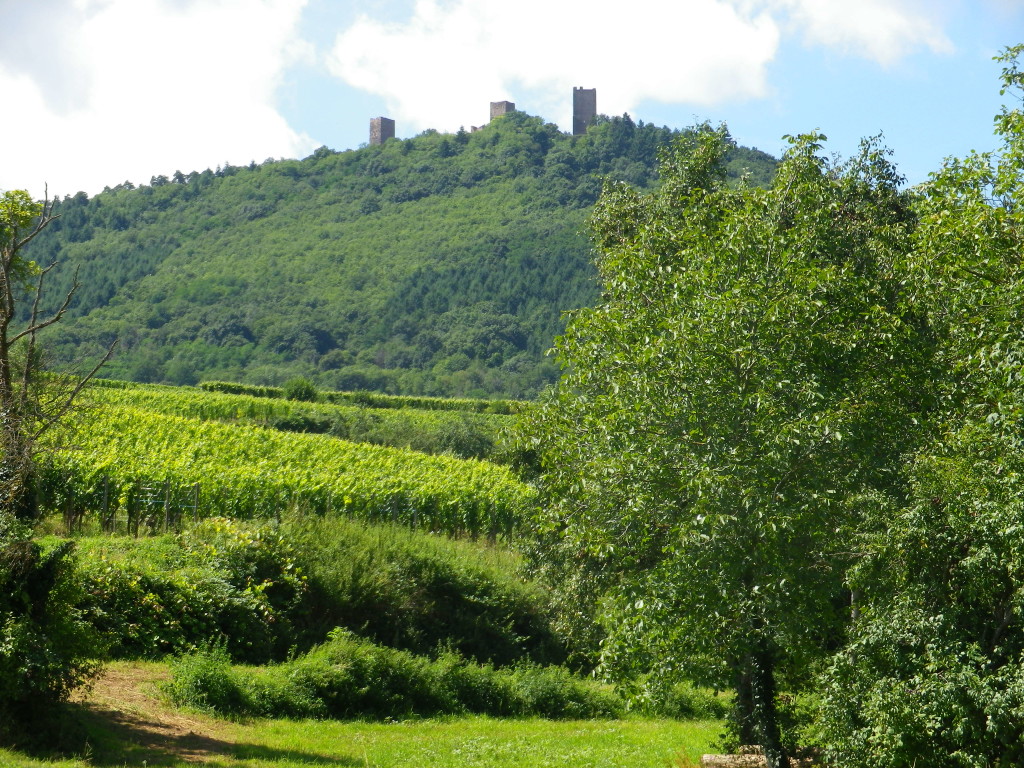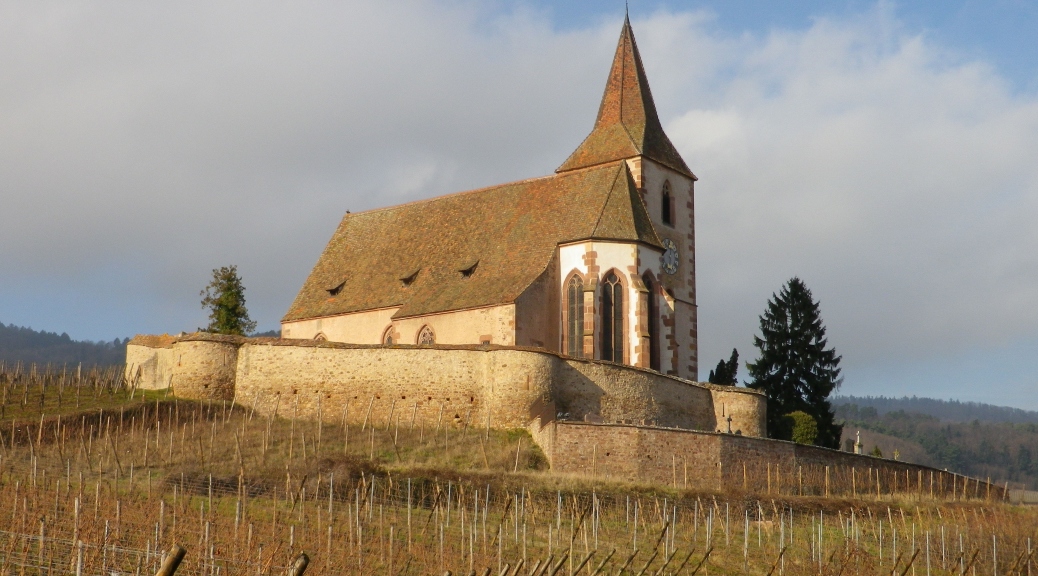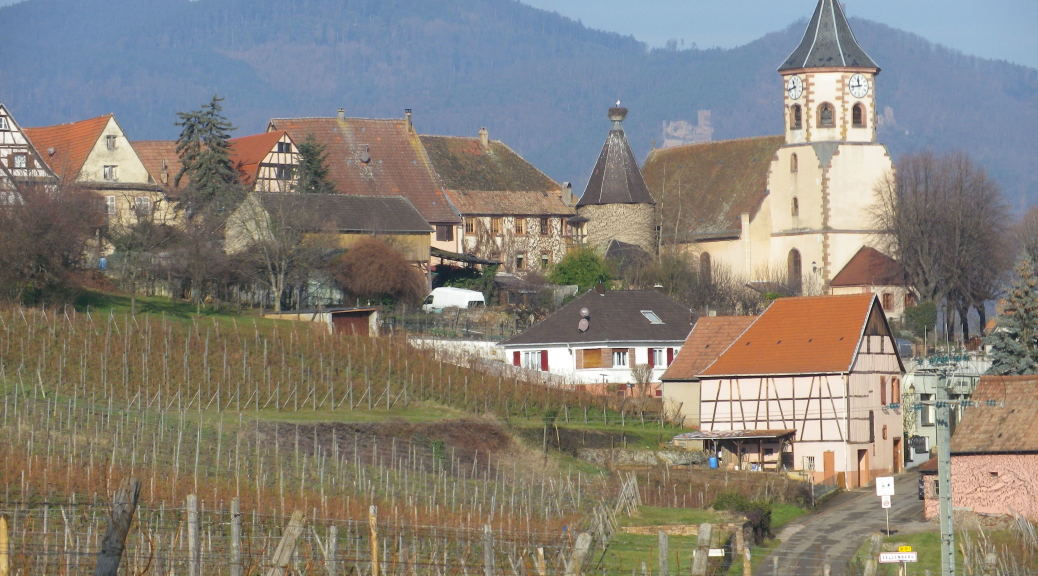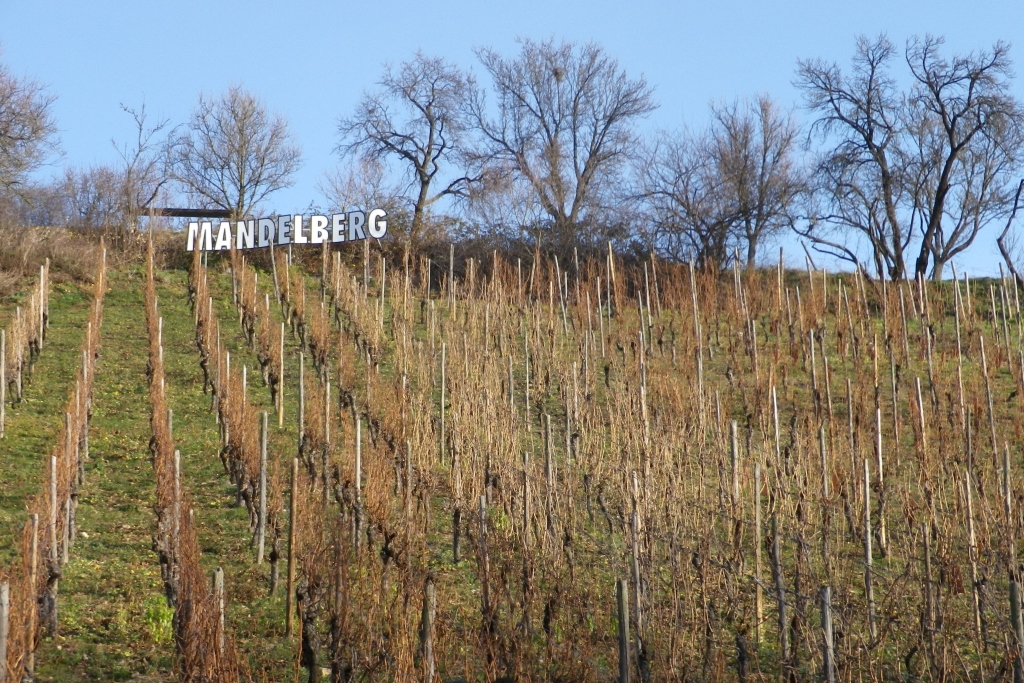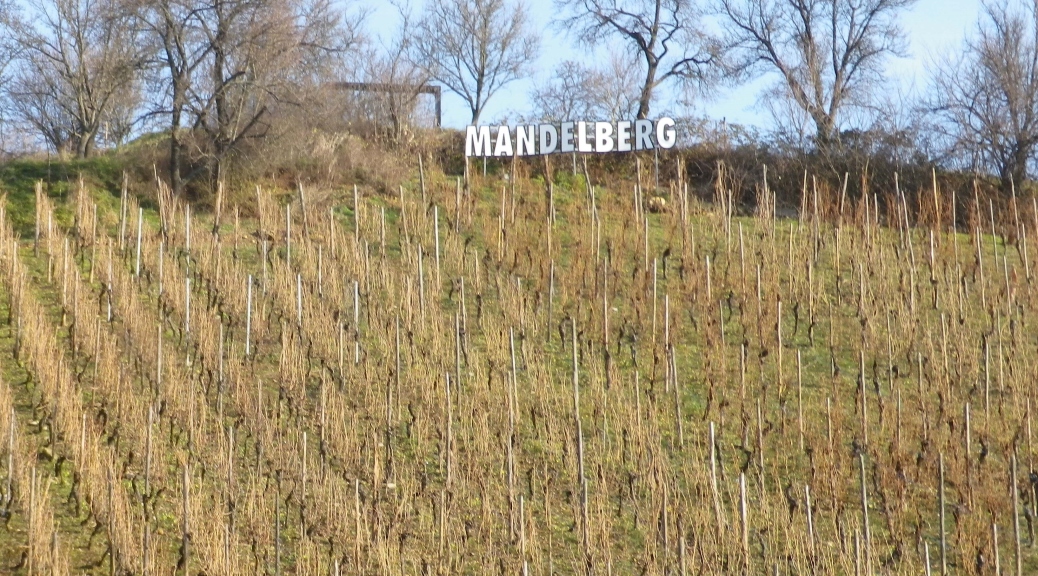What I Learned
The Bas Rhin department, in the far, northeastern corner of France, can lay claim to several Grands Crus of Alsace. Many of the better-known ones begin around Barr, and continue south. These are the Zotzenberg of Mittelbergheim (which produces Sylvaner Grand Cru wine, unusual in Alsace); the Kastelberg, Wiebelsberg and Moenchberg Grands Crus of Andlau; the Muenchberg of Nothalten and the Winzenberg of Blienschwiller; Frankstein of Dambach la Ville, and the Praelatenberg of Orschwiller/Kintzheim, the southern-most Grands Crus in the entire Bas Rhin department. However, the northern area of this department has several of its own. The Grands Crus in the Bas Rhin department from Marlenheim in the north to Bergbieten in the south are: the Steinklotz of Marlenheim, Dahlenheim’s Engelberg, the Altenbergs of Wolxheim and Bergbieten, and Molsheim’s Bruderthal.
